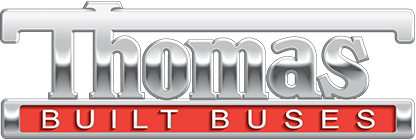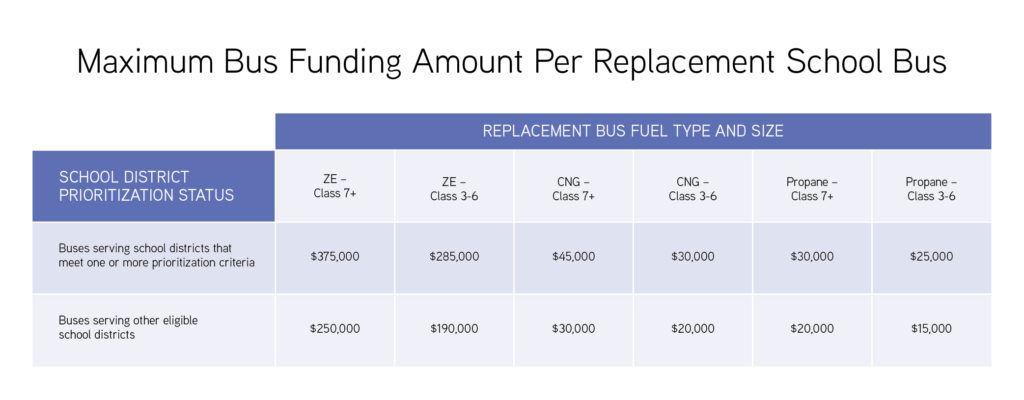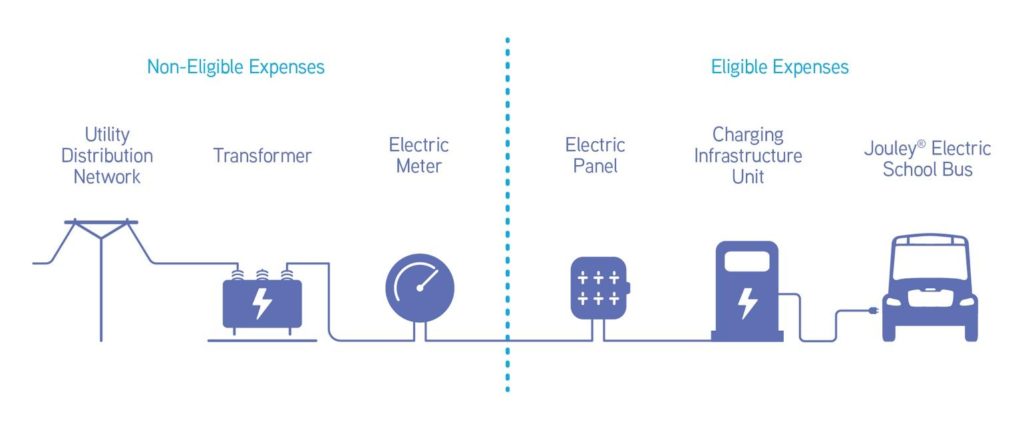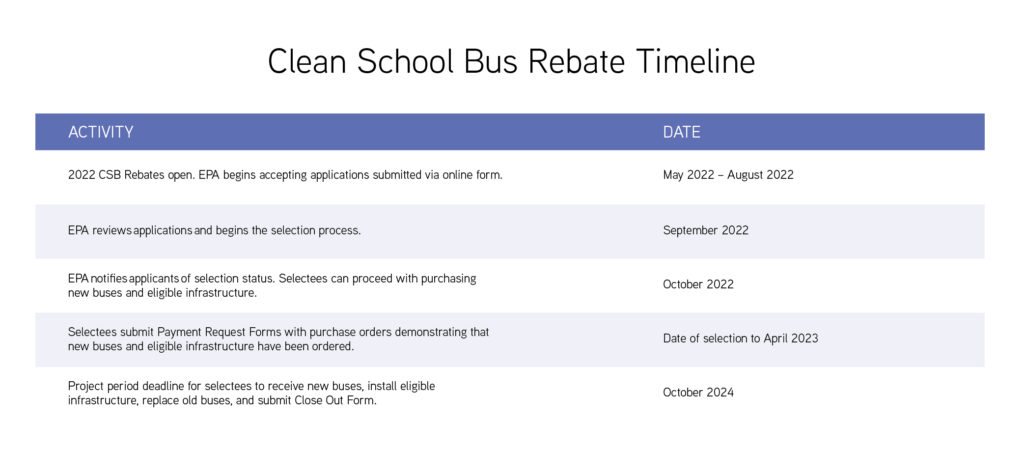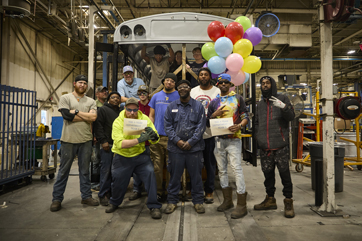
A behind-the-scenes look at our historic celebration and transition of the Type D legacy
It isn’t every day you get to celebrate a major milestone, so we’ve captured the iconic plant transition of our Type D production and commemorated the milestone in a video celebration. Chronicling the final steps of the last Type D bus to roll off the historic assembly line, the video features…
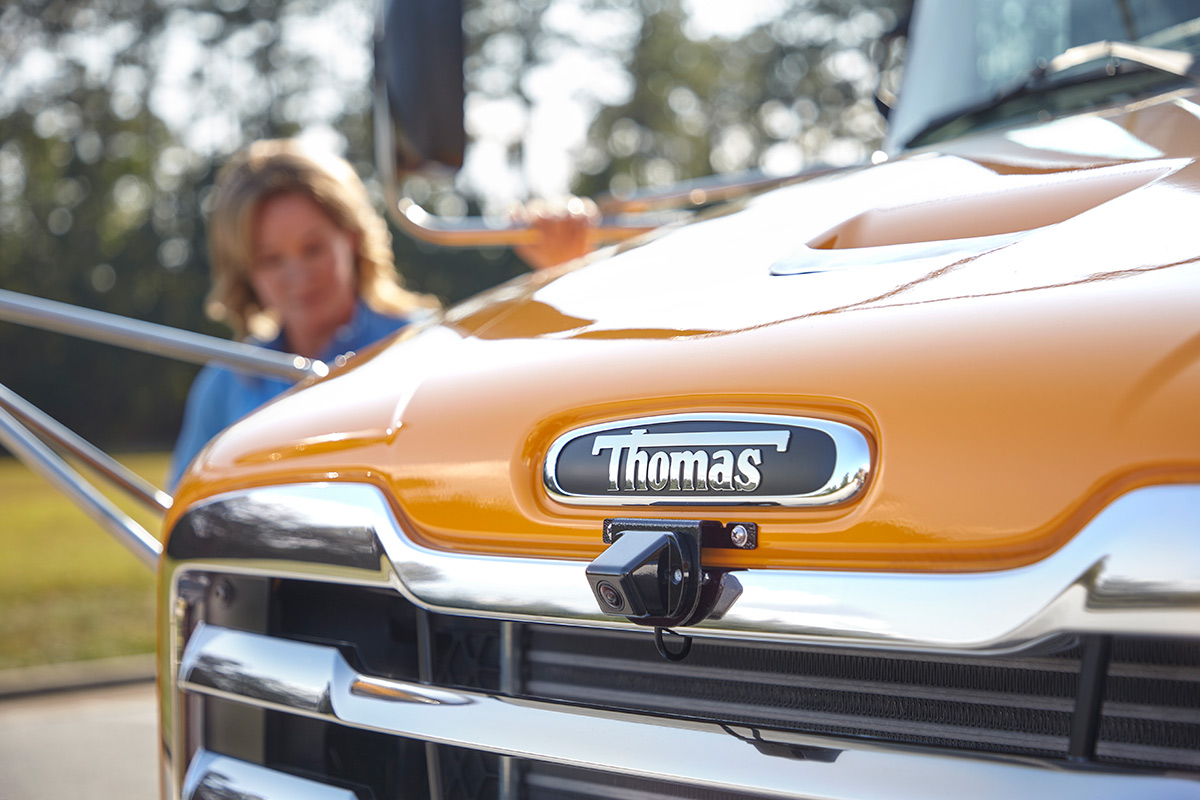
At Thomas Built Buses, we view safety as a journey, not a destination. Safety is at the core of everything we do—from our manufacturing processes to our testing protocols and focus on continuous innovation. It is more than just a feature; it’s an interconnected facet of all our operations.
Let’s look at how this commitment to safety is woven into every phase of our process, from…
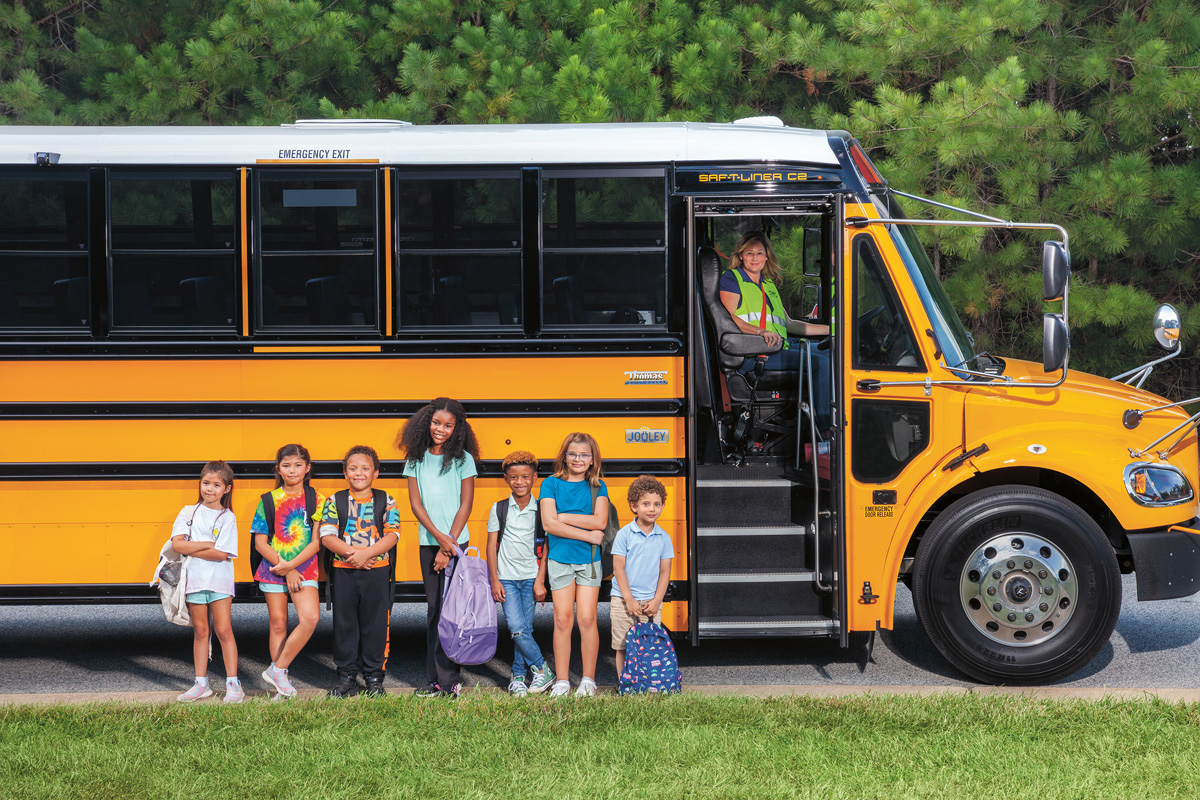
What makes the electric Saf-T-Liner C2 Jouley school bus an excellent vehicle for today and the future? Our free Electric School Bus Curriculum answers this and more.
Today’s students are increasingly interested in electric vehicles and environmentally smart transportation options. This dynamic, professionally designed curriculum provides teachers with tools and lessons to increase…
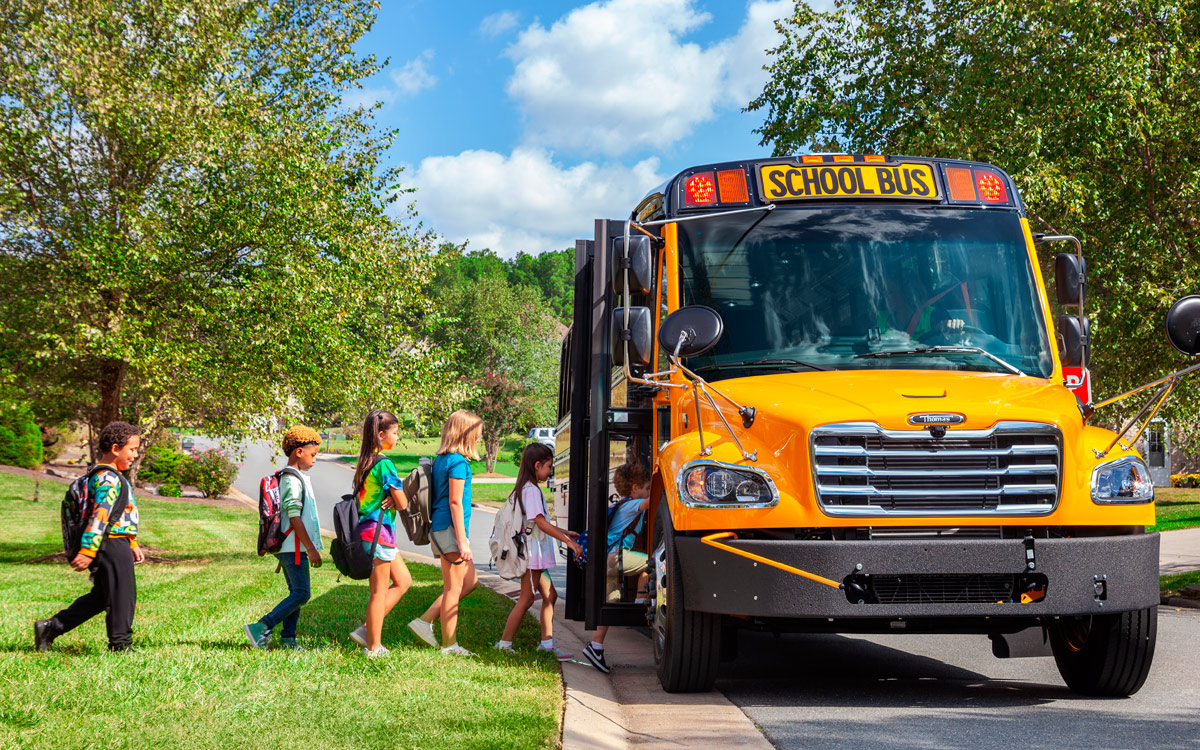
In today’s rapidly evolving industrial landscape, sustainability has become a global focus. But what does that even mean? For Thomas Built Buses, it’s about defining our commitment to our organization, our industry and the communities we serve. While our electric school bus, the Saf-T-Liner® C2 Jouley®, and its many milestones (including the recent delivery of our 1,000th) often come to…
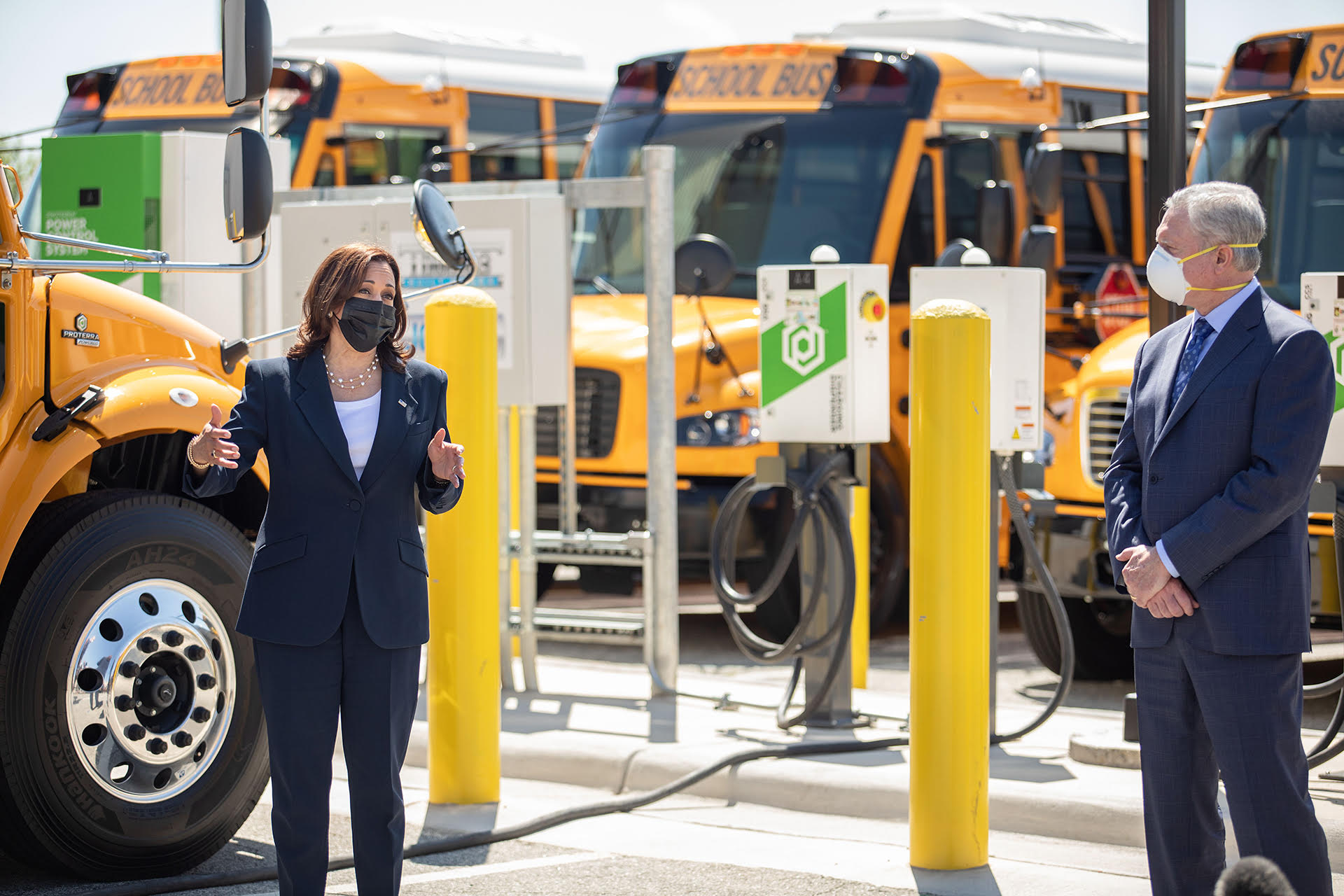
As time goes on, our world is becoming more and more earth-conscious – in the clothes we wear, companies we support and cars we drive. In the school bus industry, districts everywhere are doing their best to keep up. With electric school buses costing 3–4x the amount of regular diesel buses, sustainability is both exciting and expensive.
Thankfully, across the United States, several funding opportunities exist for fleets looking to drive the future. One of the most exciting opportunities is the Environmental Protection Agency’s (EPA) Clean School Bus Program. As part of the Bipartisan Infrastructure Law passed last year, this program will provide $5 billion over the next five years for the replacement of diesel buses with zero- and low-emission school buses.
The EPA recently announced that the first portion of Clean School Bus Program funds is now open. Here are details you need to know:
The Rebate Program
The first round of funds is available via rebate and dedicated to school bus replacement and infrastructure costs. The Rebate Program will provide a total of $500 million to fleets in need, half for zero-emission school buses and the other half for “clean” (CNG and propane) and zero-emission school buses. Fleets will be awarded funding through a lottery system, so all who submit applications on time will be eligible for infrastructure and electric or clean school bus funds.
School Bus Replacement Guidelines
Buses eligible for replacement must be a 2010 edition or older diesel-powered school bus. When your school bus is replaced with a zero- or low-emissions bus, your current bus will be scrapped. In the event your district does not have an eligible 2010 or older diesel school bus, your fleet can either scrap your 2010 or older non-diesel internal combustion engine buses or scrap, sell or donate 2011 or newer internal combustion engine buses.
Prioritized Applicants
Per the Infrastructure Bill, the Rebate Program allows the EPA to prioritize school bus replacements in high-need school districts, tribal schools, rural and low-income areas or traditionally underserved communities. A higher cost-share may be awarded to these districts. The EPA has posted a full list of prioritized applicants on its website.
School Bus and Infrastructure Funds
The number of funds awarded to each fleet will be determined based on the replacement school bus size and fuel type as well as whether the school district served by the replacement bus meets one or more prioritization criteria. During a recent webinar, the EPA emphasized that it will not disburse rebate funds greater than the actual cost of the replacement bus and that any costs above the maximum funding level will be the responsibility of the applicant/awardee to cover. Please view the table below for more information on maximum funding levels and how much your district may be eligible for:
In addition to school bus replacement funds, the EPA will award districts up to $20,000 in infrastructure funds for buses that serve prioritized applicants and $13,000 for buses that serve other eligible school districts. EPA infrastructure funds are limited to the “fleet side” of the meter. This includes electric panels and charging infrastructure units.
Application Process and Timing
The application period for the Rebate Program opened this month and will end on August 19, giving districts ample time to submit their paperwork. After the application period closes, the EPA will begin its selection process. By October, awardees will be notified.
Applications can be submitted online via EPA rebate forms. To apply, your district must have an active System of Award Management entity registration and have points of contact listed under the organization on your application. For help with this, please visit the Federal Service Desk at FSD.gov.
Here’s How We Can Help
Even with billions of electric bus funding dollars available in the U.S., the funding application process can still feel daunting at times. At Thomas Built, our team of EV specialists can help your district navigate the complex road to electric. As the Electric Bus Authority, our experts have the knowledge to help your fleet take advantage of opportunities like the Clean School Bus Program.
When it comes to EV infrastructure, working with a utility provider to bring power to your site and install electric bus equipment can take months. Before applying for government grants and incentives, it’s important to reach out to utility partners and begin the conversation. Our team can help you with this as well as talk you through other infrastructure considerations.
“It’s an exciting time to be in the school bus industry,” says Mark Childers, Thomas Built manager of powertrain and technology sales. “With billions of electric bus funds in reach and districts eager to drive the future, our team is ready to help fleets navigate the complex road to electric – and be a part of history.”
For information on how to apply for electric bus funds or for answers to your EV questions and concerns, contact the Electric Bus Authority.
